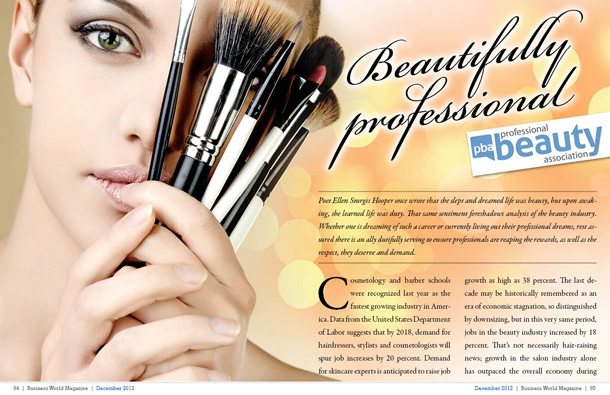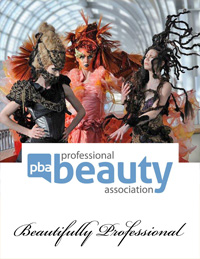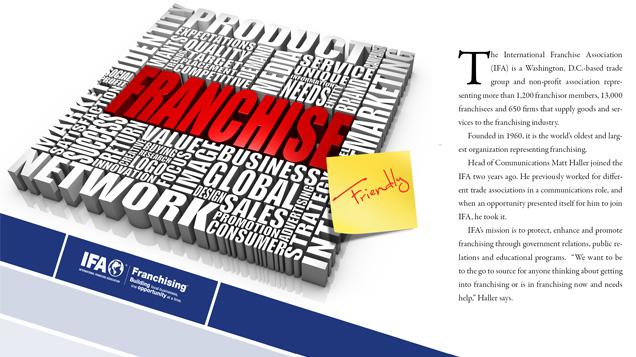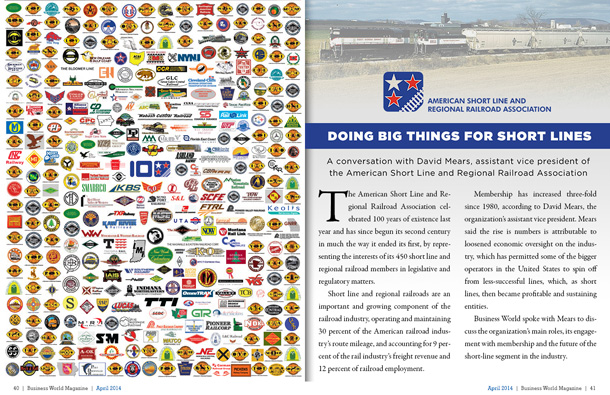

Poet Ellen Sturgis Hooper once wrote that she slept and dreamed life was beauty, but upon awaking, she learned life was duty. That same sentiment foreshadows analysis of the beauty industry. Whether one is dreaming of such a career or currently living out their professional dreams, rest assured there is an ally dutifully serving to ensure professionals are reaping the rewards, as well as the respect, they deserve and demand.Â
Cosmetology and barber schools were recognized last year as the fastest growing industry in America. Data from the United States Department of Labor suggests that by 2018, demand for hairdressers, stylists and cosmetologists will spur job increases by 20 percent. Demand for skincare experts is anticipated to raise job growth as high as 38 percent. The last decade may be historically remembered as an era of economic stagnation, so distinguished by downsizing, but in this very same period, jobs in the beauty industry increased by 18 percent. That’s not necessarily hair-raising news; growth in the salon industry alone has outpaced the overall economy during nine of the last eleven years. With more than 900,000 operating establishments and annual sales approximating $40 billion, the beauty industry represents a beautiful chunk of America’s economy, and so much like hair and fingernails, it is expected to keep growing.
“Beauty is truth, truth is beauty… and that is all ye need know,†wrote Keats. When it comes to true support, information, education and honest-to-goodness service on behalf of those in this industry, all you need to know is the Professional Beauty Association (PBA). Since merging with the National Cosmetology Association in 2010, PBA has emerged as the industry’s largest trade association, and their focus isn’t limited solely to hair stylists and cosmetologists; as a broad-based trade group, they also represent specialty manufacturers, supply chain enterprises and salon owners. Their work also benefits consumers.
“Our underlying goal is to advance our industry,†says PBA’s Executive Director Steve Sleeper. In so doing that advancement is manifested in PBA’s input on developing standards of training, its creation of resources for information and financial support, its organization of international events that annually draw thousands of participants together, and its unwavering advocacy that communicates the value of its professional members. And their message isn’t simply directed at audiences of common consumers, it goes all the way to Capitol Hill.
In recent years, PBA has dramatically expanded its capabilities in the realm of public policy, enacting measures that Sleeper credits for “driving and building a robust government affairs program.†He says a diversity of issues poses both challenges and opportunities, but thus far, PBA has attained certain victories that ultimately benefit the wide range of industry professionals.
Licensed to Thrill
One example of success involves defeating the enactment of legislation that would eliminate occupational licensing. In the last legislative cycle, Sleeper says the emergence of Tea Party Governors (combined with NGOssupporting mandates for government to get out of business) resulted in efforts to remove licensing requirements. Their argument was that licensure is an impediment to people being employed. Beyond the fact that those in the industry actually appreciate their training, certification and earned status as professionals, Sleeper says any measure to remove licensing in the beauty industry stems from “fundamental lack of understanding.â€
“It is an uneducated and naive position to say don’t license the industry… there are public health and safety issues involving disease control and infection control. Just like at restaurants, no one would want to see restaurants deregulated because there are public health issues. The same is true for hair salons, just imagine, someone is cutting your hair with razor sharp scissors. They’re applying harsh chemicals that can cause injury if not used correctly. They’re using tools that can help spread disease if not cleaned properly. Deregulation just doesn’t make any sense,†says Sleeper. PBA has been very active in fighting against these kinds of legislative policies, but at the same time, has been working to unify what are otherwise State-to-State disparities in licensing requirements. That work continues.
Take a Little Off the Top
PBA is also very engaged in efforts to help members experience tax relief. On that front, Sleeper says PBA is striving to secure policies similar to that provided to restaurateurs. As such establishments have staff which receives tips, employers are responsible for paying the FICA tax on those tips, even though that money never actually shows up on the books of the restaurant. Restaurant associations have successfully negotiated allowances that, in turn for their enforcement of staff tip reporting, owners would be granted a tax credit (a dollar credit per dollar of FICA tax). Salons have two types of staff, notes Sleeper. In some cases, there is staff directly employed by the owner. In other cases, there are stylists who rent a chair (or station) in the salon as an independent contractor. Owners who too strenuously push tip compliance have run risk of walkouts of essential staff, who ultimately take their talent and customer base elsewhere. On the other hand, salon owners are bearing the brunt of the tax burden for funds they never actually receive. PBA is strenuously trying to bring change to this matter. “We will help educate members, and owners will help ensure the taxes are paid, but they want the same credit restaurants keep, and they need it so they cannot only compete, but stay in business. It’s a huge issue,†says Sleeper.
Read Instructions Before Applying
There is an increasing array of products being touted as miracle cures for all manner of hair and skin maintenance. Sleeper says that mix of products could benefit by an extra ingredient of increased regulation. He says the “voluntary†mechanism of disclosure is not only outdated, but the absence of uniform oversight has led to “radical†proposals that hurt the entire industry. Referring to a bill known as the “Safe Cosmetics Act†introduced by U.S. Representative Jan Shakowsky of Illinois, Sleeper says had the bill passed, it would have inflicted crippling tolls of cost and burdens on manufacturers, with many, only using that which has been consistently demonstrated as safe and non-toxic (think aloe, shea butter and coconut oil). He goes on to say the industry can be proactive to implementing measures which both responds to consumer concerns and prevents issuance of future, and potentially harmful, legislation. He advocates closer work with the FDA and transparency of registered facilities where products are being manufactured. “We’re saying let’s create a model, let’s put something on the table that’s workable, and go about it the proper way,†says Sleeper.
Hair-DOs
Events are another major function of PBA. These include highly attended gatherings between buyers and sellers with products, tools and other merchandise on display or demonstrated for use. Most events also provide education and networking opportunities for professionals, while others help bring national recognition honoring stylists for creativity and innovation. Sleeper calls their annual awards programs (the North American Hairstyling Awards, or NAHA) the “Oscar Ceremony of the industry.â€
Beyond all the planning for orchestrating those events that benefit professionals, PBA and its members play a hands-on role helping people who aren’t in the industry. This includes partnering in initiatives with the National Cancer Society. PBA offers support to patients undergoing chemotherapy by providing hair, make-up and beauty tips as they cope with that difficult period. Sleeper notes, “There are some 40,000 men and women who are patients, our goal is to help them feel a little better about themselves as they cope with cancer treatment.â€
Another program of support is called, “CUT IT OUT,†an initiative that helps beauty professionals identify victims of domestic abuse. Professionals assist in reporting such abuse and also help provide information on helpful resources for those who are victims.
In terms of other victims, PBA has also been very busy recently offering help to East Coast professionals impacted by Hurricane Sandy. Sleeper says a disaster relief fund was established and is currently helping disperse funds to those most severely affected by the storm.
What is at the root of their charitable service is the same that is at the root of the industry – people. Sleeper says products come and go, styles come and go, “but this is a people industry, with a lot of history, served by a lot of family-run businesses who also have a rich heritage of giving back to their communities.â€
He says while the public policy work, program development and event organizing can sometimes be likened to “a 3-ring Circus†all still comes down to “people serving people… helping to make their customers look good and feel good.†And as much as stylists focus on making their clients look good and feel good, PBA is striving to do the same for its members.








